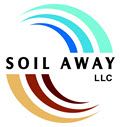
How to Clean a Sewage Backup
Sewage backups in your property are not pleasant to deal with. Depending on the size and scope of the damage, some people consider cleaning it themselves. DIY sewer backup cleanup is not typically recommended and for major spills a professional should be called in. The sewage water needs to be removed as soon as possible, using a pump to remove excess water and shoveling dirt, soil and other debris into heavy duty plastic bags. Any affected carpet, insulation, drywall, and baseboards should be discarded. These building materials are porous and cannot be fully sanitized and therefore should be replaced. You can then begin the process of washing down the area with hot water and disinfectant.
Common Sources of a Pipe Backup
A backup occurs when a drainpipe in your property clogs or overflows. This causes the contents of the pipe to flow back into your property. This can happen with a septic tank that is over filled; a municipal sewer system that fails; a collapsed drainpipe underground (perhaps tree roots have grown through them); or a drainpipe that is blocked by excessive volume or a non-approved item was flushed. Regardless of the cause of the sewer backup, know the that water should be treated as highly contaminated and the cleanup process addressed with caution.
For Sewage Backup, Protect Yourself and Prevent Cross-Contamination
In the case of a sewage backup, you will want to isolate the contaminated area as much as possible. This will help prevent airborne cross-contamination. Close doors to block off the area and prevent this cross-contamination. You can even seal off areas with plastic sheathing.
Plan your entry and exit strategy in and out of the affected space. Whenever you exit the affected space you risk carrying contaminants into other areas via your footwear, clothing, contents, etc… These spaces, while not directly affected by the sewer backup will need to be cleaned and treated as well.
Most importantly, proper attire is important to protect yourself during the cleanup process. This includes rubber gloves, rubber boots, protective eyewear and a mask. Take care not to let your skin come in direct contact with the sewage spill, which can lead to serious infections.
Dispose of Sewage and Items in the Area Before Beginning the Cleaning Process
The cleanup process should begin as soon as possible, removing excess water using a wet-dry vacuum. You can then shovel debris, carpet and flooring, insulation, baseboards and anything that has been contaminated into plastic bags and dispose of it immediately.
After everything has been removed from the area, wash down the walls, floors and all other surfaces using hot water and bactericidal disinfectants. This cleaning should be followed with another thorough wash using water and a household detergent. After cleaning, remove remaining moisture and allow the area to air-dry for 24-72 hours, opening windows or running a dehumidifier and fans. This will help to reduce the potential for mold growth.
Cleaning up a sewage backup is no easy task and is often best left to the disaster restoration professionals. Soil-Away has teams on call 24/7, 365 days a year to help in the event of a sewage backup. Contact Soil-Away at 603-641-6555.

